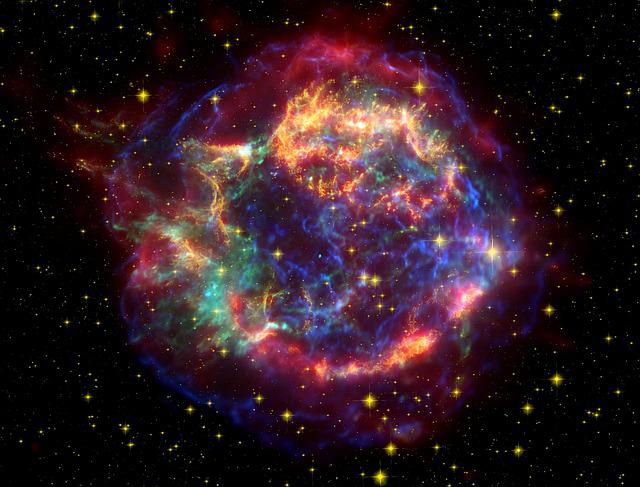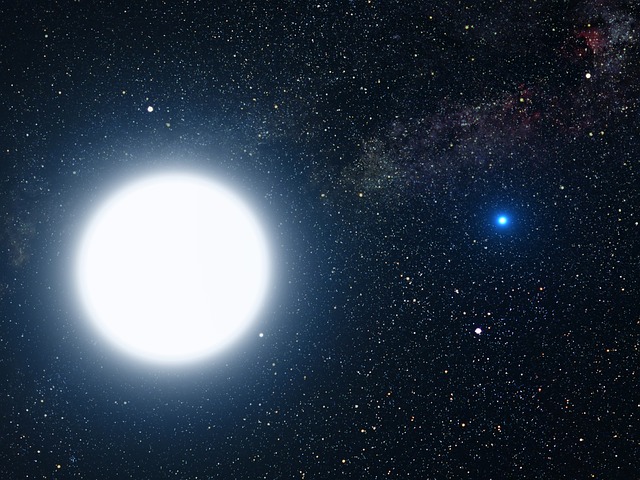*This post may contain affiliate links. This means we may make a commission if you purchase an item using one of our links*
The main difference between a supernova and a kilonova is that kilonovae are formed when 2 neutron stars collide whereas a supernova occurs when either a white dwarf that is 1.44+ solar masses or a star that is 8+ solar masses explodes, producing a neutron star or black hole and emits light that easily eclipses the galaxy in which they reside.
For a more thorough breakdown of both of these extraordinary phenomena, continue reading.
What Is A Supernova?
Table of Contents

Supernovae a classified under 2 different types where a type 1 supernova is an explosion that leaves no hydrogen line emissions in the spectra and a type 2 supernova is distinguished where a star 15 times the mass of our sun explodes and does produce hydrogen line emissions as a result.
There are two ways that a supernova explosion can form.
It can either be via a white dwarf in a binary star system that accumulates too much energy from its companion star causing it to explode or when a larger star runs out of nuclear fuel and collapses under its own gravity, leaving behind the bright and grandiose remnants of this explosion many times brighter than even its own galaxy.
As stated above supernovae are generally split into 2 types, a type 1 supernova or a type 2. Type 1’s are then further split into 1 of 3 subcategories, Ia, Ib or Ic.
A type 1a supernova is the most commonly observed in outer space and acts like a candle light to help us observe distance across the deep unknown.
These are theorised to form after a white dwarf, likely in a binary star system, has exploded due to the over consumption of energy from its companion. Type Ia’s have a strong silicon absorption line near its maximum luminosity whilst producing no hydrogen at the same time.
Type Ib’s are formed after a large star collapses under its own core gravity where the outer region of the stars hydrogen is stripped away, leaving behind only the second layer of helium.
Type Ic’s lack both the hydrogen and helium layer when they explode, although the difference here has been debated as not being significant enough to differentiate a type Ib from a Ic.
Type 2 supernovae are formed when a star between 8 – 50 times the Sun’s mass collapses into itself and causes a huge explosion that produces a black hole in most cases. This is because black holes require materials from an explosion that is atleast 3 solar masses in size.
In essence anything above 20 times the size of our Sun can potentially result in a black hole whilst a white dwarf star that is 1.44 solar masses or between 10 – 20 times the mass of our Sun would produce a neutron star instead.
What Is A Kilonava?

For a kilonova to occur 2 neutron stars need to collide. Neutron stars are formed when a star around 8 solar masses explodes through a supernova explosion.
These neutron stars also tend to a be in a binary star system. In this situation if the neutron stars are close to each other, they will gradually spin inwards as a result gravity until they merge together and cause an explosion.
As the name kilo would suggest, kilonovae are typically 1000 times more bright than your average nova however, when it comes to comparing them to your average supernova, they fall far short, whether it be in terms of luminosity or power.
After the explosion has set, scientists have observed that one possible outcome of this collision would be the formation of a black hole.
However, this is unlikely to be the most common outcome as black holes require materials that add up to around 3 solar masses but, according to the Laser Interferometer Gravitational-Wave Observatory study on kilonova collisions, it appears some can result in black holes.
Other kilonovae may have an afterglow that may get brighter over a few months or years after the explosion, which typically will be formed by the x-rays and radio emissions that the explosion ejects.
Of course if a black hole forms, these emissions will eventually fall into its singularity.
Similarities Between A Supernova And A Kilonava
Both supernovae and kilonovae are large cosmic explosions that occur between stars and are able to produce black holes once everything has settled.
Other than this similarity, these two cosmic explosions differ in quite a few ways.
Differences Between A Supernova And A Kilonava
As for what the differences are between a supernova and kilonova, they include the following:
- Supernova explosions occur when either a star with 8 solar masses or a white dwarf with a solar mass of 1.44 collapses into themselves whereas Kilonovae occur when 2 neutron stars in a binary star system collide.
- Supernova explosions tend to form either a neutron star or black hole whereas kilonova either has a radioactive afterglow or may even produce black holes themselves.
- Supernovae are brighter and more luminous than your average kilonova where the latter is said to be 1/10th – 1/100th the brightness of a supernova if not less. Unlike a kilonova, your average supernova is able to outshine entire galaxies due to the magnitude of its luminosity.
- Supernova tend to burn at around 1 billion degrees celsius whilst a kilonova will be around 9,000 – 11,000 degrees celsius making far cooler than your average supernova.
- Supernovae tend to illuminate for a few months at most whilst kilonova will continue to produce its after glow anywhere from a few months to a few years.
- Supernova explosions are far bigger than those produced by a kilonova explosion due to the former ejecting more energy than the latter.
Summary
As has been detailed throughout this article, both entities are very bright and rank amongst the brightest entities in the universe however, Supernovae are simply more powerful, as they are capable of outshining entire galaxies.
In the end of it all Supernova simpler are the more grander explosion of the two.

